Energy Storage
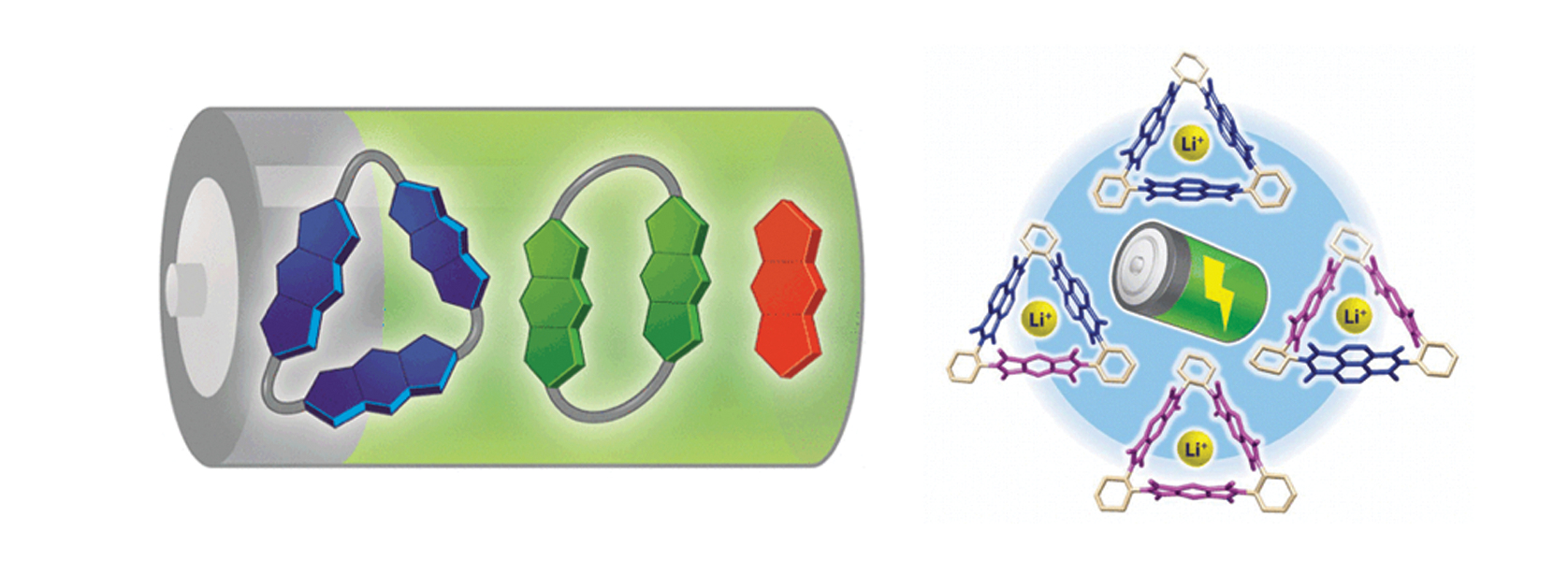
Cost-effective electrical energy storage, in the form of batteries, is of great importance in today’s society. Although lithium-ion batteries are widespread in small-scale devices (e.g. consumer electronics), limitations on lithium reserves means that using lithium-ion batteries for large-scale applications (e.g. electric vehicles) will be a significant challenge. We are seeking to develop new technologies to reduce the dependence on lithium-ion batteries, for example organic rechargeable batteries (ORBs), which utilize redox-active organic species, alongside more abundant metallic species (e.g. sodium). Research in this project focuses on redox-active cyclic species and mechanically interlocked architectures which can take up, store, and release large numbers of electrons.
Energy Harvesting
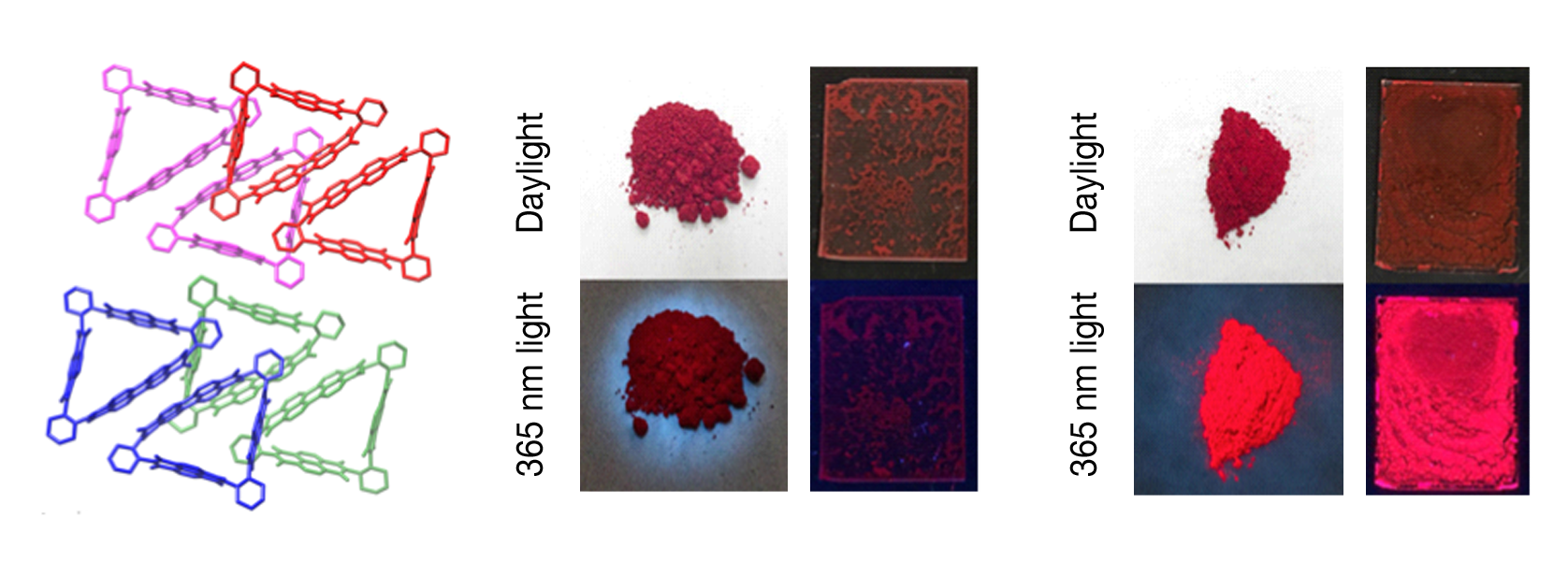 The majority of the world’s infrastructure is powered by fossil fuel energy sources, such as coal, oil and natural gas. The dwindling supplies of these resources, coupled with the devastating effects of climate change, mean that transitioning energy sources to renewable and carbon neutral substitutes, such as solar or wind power, is essential for the responsible development of human technology. Although the efficiency and capabilities of solar cells are improving, they remain an expensive solution to the renewable energy problem. We are interested in developing organic photovoltaic (OPV) devices, which can be constructed at a lower cost than silicon solar cells. By utilizing redox-active macrocycles that can assemble into stable nanowires, we can produce thermally robust semi-conducting assemblies, with tunable properties, that can be employed as make changes in macrocycles to produce new photo-active materials.
The majority of the world’s infrastructure is powered by fossil fuel energy sources, such as coal, oil and natural gas. The dwindling supplies of these resources, coupled with the devastating effects of climate change, mean that transitioning energy sources to renewable and carbon neutral substitutes, such as solar or wind power, is essential for the responsible development of human technology. Although the efficiency and capabilities of solar cells are improving, they remain an expensive solution to the renewable energy problem. We are interested in developing organic photovoltaic (OPV) devices, which can be constructed at a lower cost than silicon solar cells. By utilizing redox-active macrocycles that can assemble into stable nanowires, we can produce thermally robust semi-conducting assemblies, with tunable properties, that can be employed as make changes in macrocycles to produce new photo-active materials.
Molecular Electronics
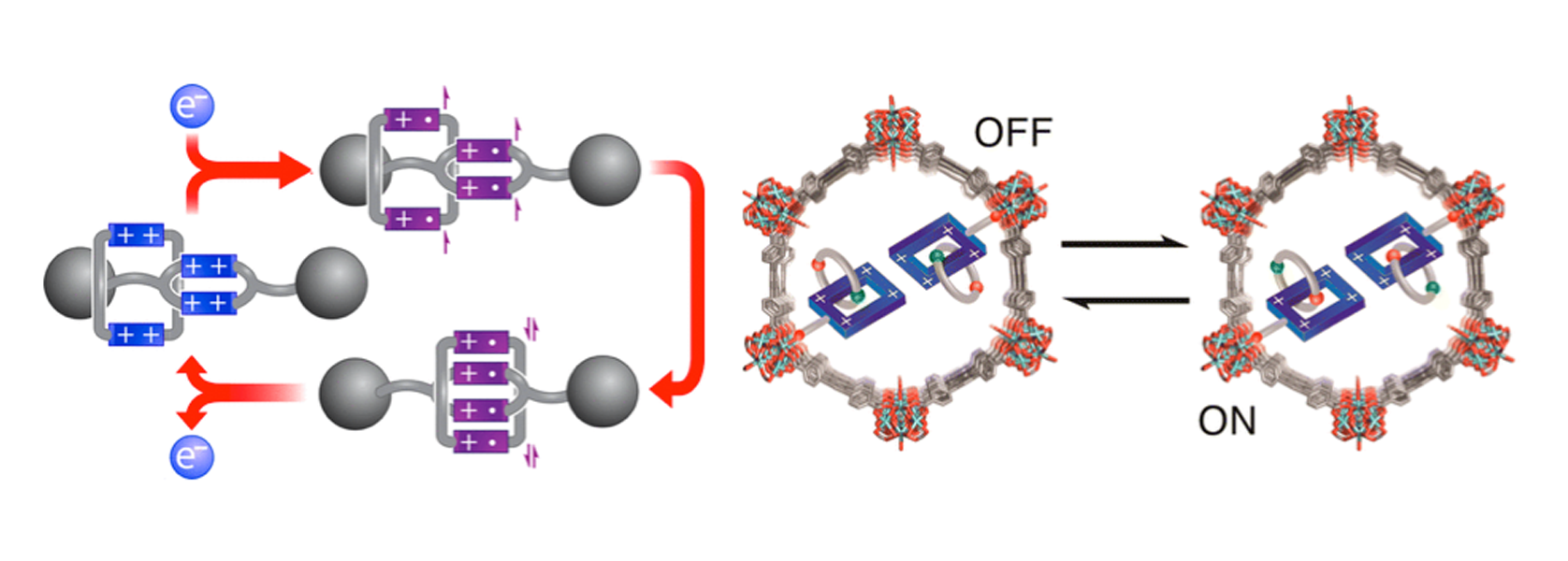
Improvements in computer hardware and capabilities have been driven by the miniaturization of transistors in integrated circuitry. Miniaturizing components, however, is becoming more challenging and cost-prohibitive as transistors enter the nanometer regime. In the Stoddart group, we are seeking to use individual molecules as memory elements for use in data storage media. Our research in this area is focused upon the synthesis and characterization of a variety of switchable, mechanically interlocked molecules (MIMs) and their incorporation into rigid frameworks for use in potential data storage applications.
Porous Materials
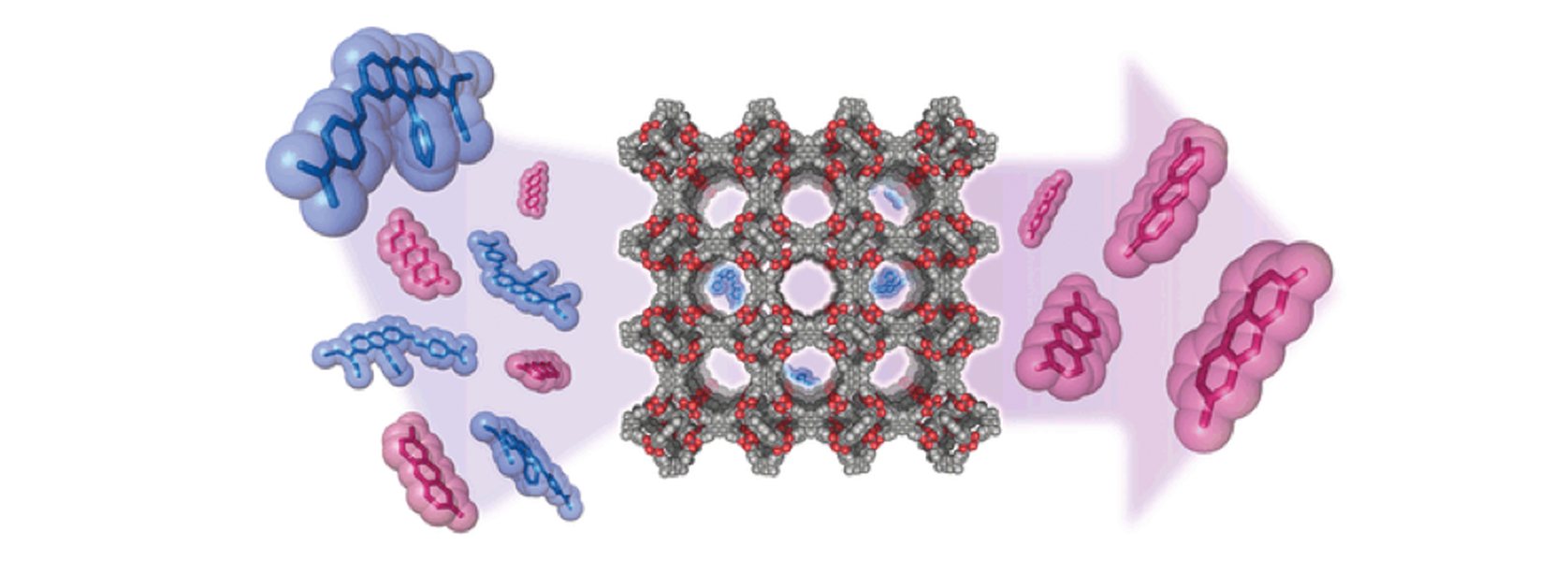 Porous materials have great potential in the sequestration of various elemental and molecular species, and the purification of organic compounds, for example petrochemicals. The sequestration of trace elements—including lithium, gold, silver and rare earth elements—from seawater, as well as the removal of potent greenhouse gases from Earth’s atmosphere, can be improved significantly through the use of porous materials. In the Stoddart group, we employ a series of porous supramolecular frameworks (including metal-organic frameworks, hydrogen-bonded organic frameworks and supramolecular polymers), in conjunction with various redox active functional groups, to produce a wide range of supramolecular constructs which can be used to sequester various molecular species in a more efficient manner than current technologies.
Porous materials have great potential in the sequestration of various elemental and molecular species, and the purification of organic compounds, for example petrochemicals. The sequestration of trace elements—including lithium, gold, silver and rare earth elements—from seawater, as well as the removal of potent greenhouse gases from Earth’s atmosphere, can be improved significantly through the use of porous materials. In the Stoddart group, we employ a series of porous supramolecular frameworks (including metal-organic frameworks, hydrogen-bonded organic frameworks and supramolecular polymers), in conjunction with various redox active functional groups, to produce a wide range of supramolecular constructs which can be used to sequester various molecular species in a more efficient manner than current technologies.
Membrane Technology
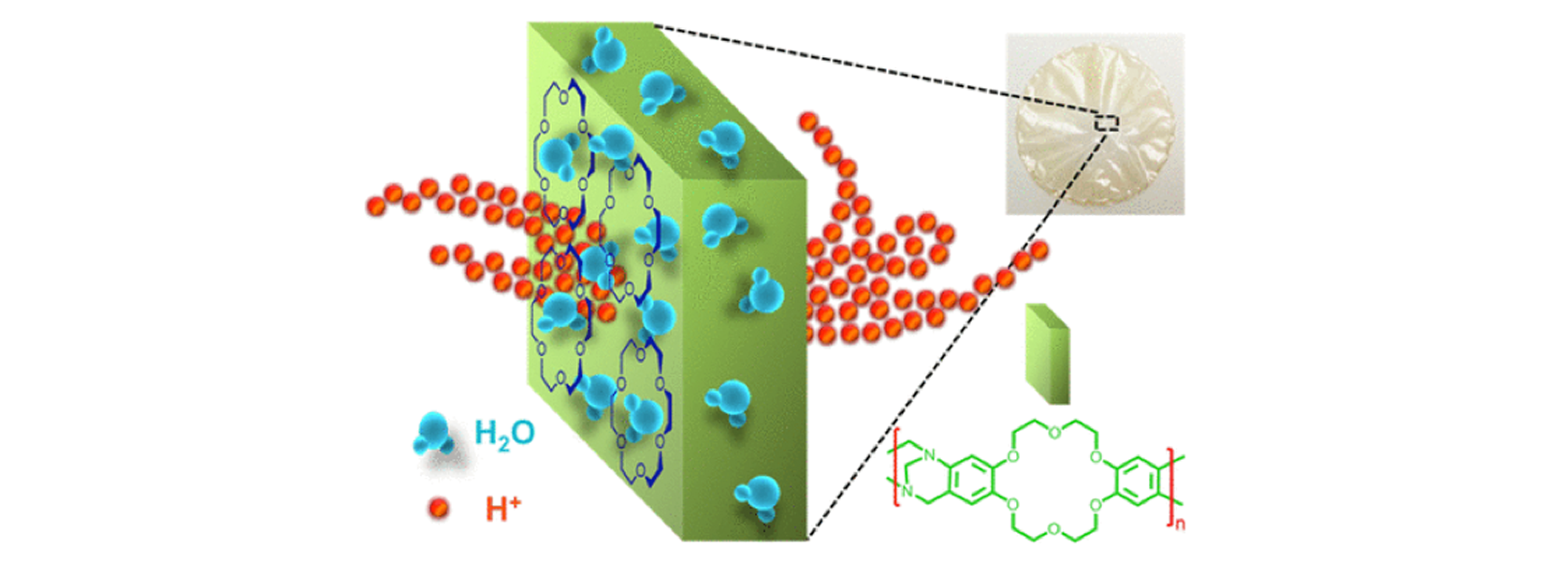 Increases in world population has generated an increased demand for both environmentally-friendly energy sources and high-quality drinking water. The desalination of seawater is considered a viable option to produce large amounts of clean drinking water, however, current processes to achieve this consume large amounts of energy and the porous materials used to filter seawater lack fine control over pore-size. Proton-exchange membrane (PEM) fuel cells have the potential to reduce the environmental impact of energy consumption, but current applications are hindered by high costs and short lifetimes of membranes. In the Stoddart group, we seek to apply supramolecular chemistry to solve these problems. We are currently investigating a series of hybrid polymeric species and porous membranes, alongside mechanically interlocked polymers, which incorporate various redox-active building blocks, to produce the next generation of water desalination and fuel-cell membranes.
Increases in world population has generated an increased demand for both environmentally-friendly energy sources and high-quality drinking water. The desalination of seawater is considered a viable option to produce large amounts of clean drinking water, however, current processes to achieve this consume large amounts of energy and the porous materials used to filter seawater lack fine control over pore-size. Proton-exchange membrane (PEM) fuel cells have the potential to reduce the environmental impact of energy consumption, but current applications are hindered by high costs and short lifetimes of membranes. In the Stoddart group, we seek to apply supramolecular chemistry to solve these problems. We are currently investigating a series of hybrid polymeric species and porous membranes, alongside mechanically interlocked polymers, which incorporate various redox-active building blocks, to produce the next generation of water desalination and fuel-cell membranes.
Drug Delivery
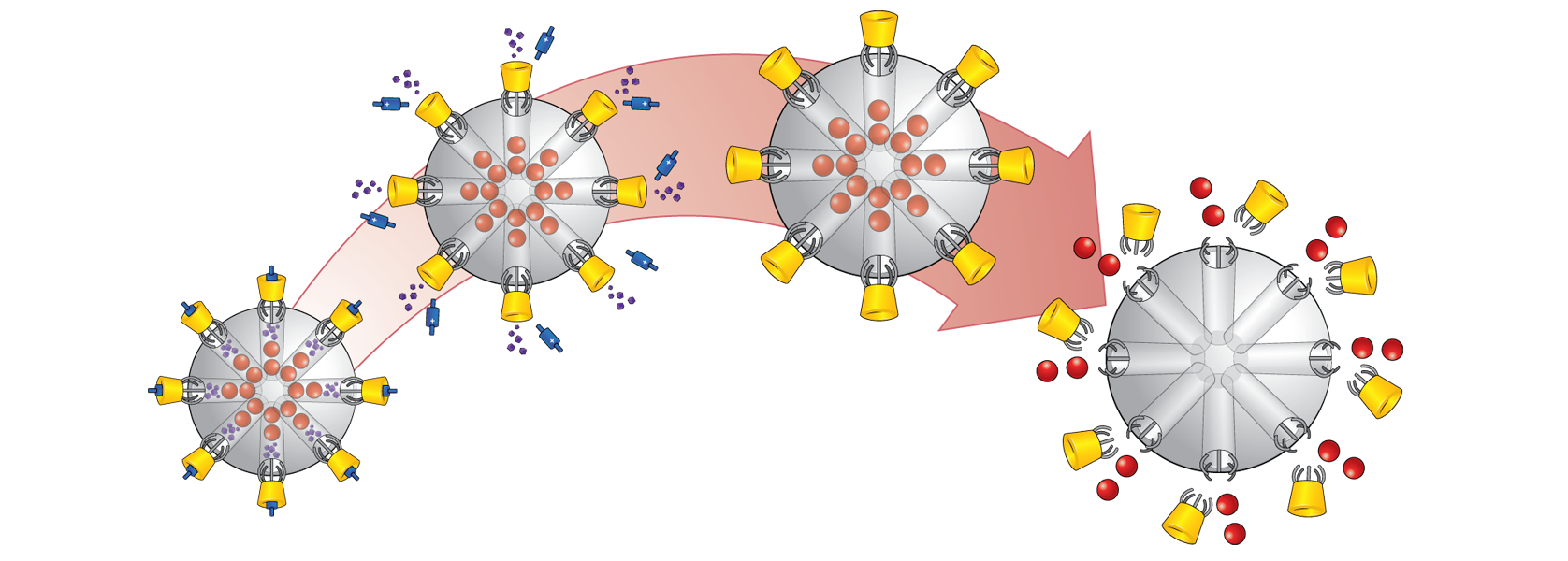 The development of new methods to administer drugs with low solubility or bioavailability, along with the need to deliver drugs selectively, and to targeted locations around the body, are amongst the most important areas of research in drug development. The use of porous frameworks and assemblies to encapsulate a variety of drug molecules, and to control their uptake and release at selected locations around the body, has emerged as a promising method to improve drug delivery. Research on drug delivery in the Stoddart group focuses on the exploitation of supramolecular architectures, for example porous nanoparticles and metal-organic frameworks (MOFs), for targeted drug delivery. Our current work centers around assembling MOFs from structurally simple building blocks, including sugar-derived macrocycles (cyclodextrins, CD), various metallic species (K+, Cs+ Rb+ etc.) and alcohols (e.g. MeOH). These frameworks have low toxicity and allow drugs to be administered with higher levels of deliverability, bioavailability.
The development of new methods to administer drugs with low solubility or bioavailability, along with the need to deliver drugs selectively, and to targeted locations around the body, are amongst the most important areas of research in drug development. The use of porous frameworks and assemblies to encapsulate a variety of drug molecules, and to control their uptake and release at selected locations around the body, has emerged as a promising method to improve drug delivery. Research on drug delivery in the Stoddart group focuses on the exploitation of supramolecular architectures, for example porous nanoparticles and metal-organic frameworks (MOFs), for targeted drug delivery. Our current work centers around assembling MOFs from structurally simple building blocks, including sugar-derived macrocycles (cyclodextrins, CD), various metallic species (K+, Cs+ Rb+ etc.) and alcohols (e.g. MeOH). These frameworks have low toxicity and allow drugs to be administered with higher levels of deliverability, bioavailability.

